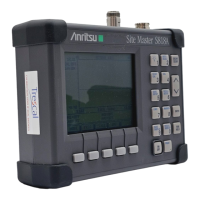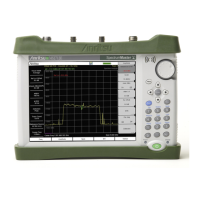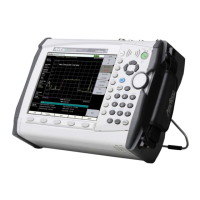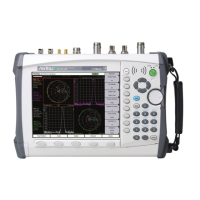S331L UG PN: 10580-00321 Rev. M 3-17
Cable and Antenna Measurements 3-4 Line Sweep Measurements
Windowing
The theoretical requirement for inverse FFT is for the data to extend
from zero frequency to infinity. Side lobes appear around a
discontinuity because the spectrum is cut off at a finite frequency.
Windowing reduces the side lobes by smoothing out the sharp
transitions at the beginning and the end of the frequency sweep. As the
side lobes are reduced, the main lobe widens, thereby reducing the
resolution.
In situations where a small discontinuity may be close to a large one,
side lobe reduction windowing helps to reveal the discrete
discontinuities. If distance resolution is critical, then reduce the
windowing for greater signal resolution.
If two or more signals are very close to each other, then spectral
resolution is important. In this case, use Rectangular Windowing for the
sharpest main lobe (the best resolution).
In summary:
• Rectangular windowing provides best spatial distance resolution
for revealing closely spaced events, but the side lobes close to any
major event (large reflection) may mask smaller events which are
close to the major event. Excellent choice if multiple faults of
similar amplitudes close together are suspected.
• Nominal Side Lobe windowing provides very good suppression of
close-in side lobes, but compromises spatial distance resolution
compared to Rectangular. Closely spaced events may appear as a
single event, often non-symmetrical in shape. Excellent overall
choice for most typical antenna system sweeps.
• Low Side Lobe windowing provides excellent suppression of
close-in side lobes but spatial distance resolution is worse than
Nominal Side Lobe. The additional suppression of side lobes may
be useful in locating very small reflection events further away
from large events. It is not often used for field measurements.
• Minimum Side Lobe windowing provides highest suppression of
side lobes but worst spatial distance resolution. Can be useful for
finding extremely small events spaced further apart than the
distance resolution. Again, not typically used for field
measurements.

